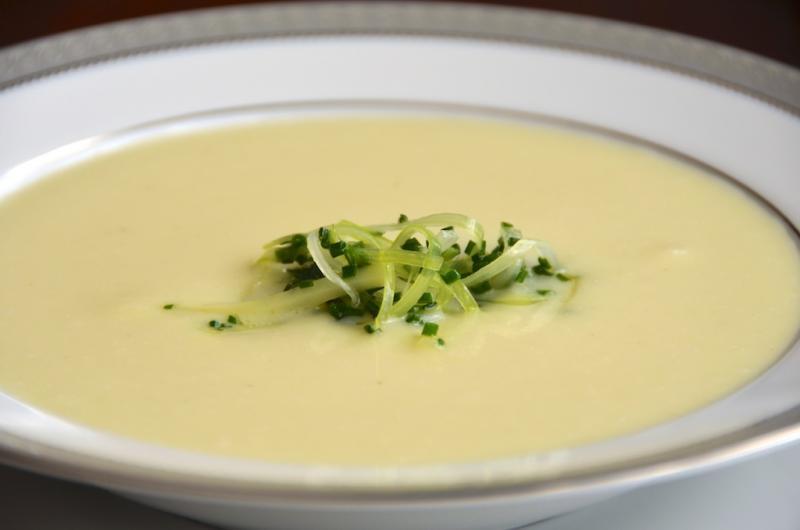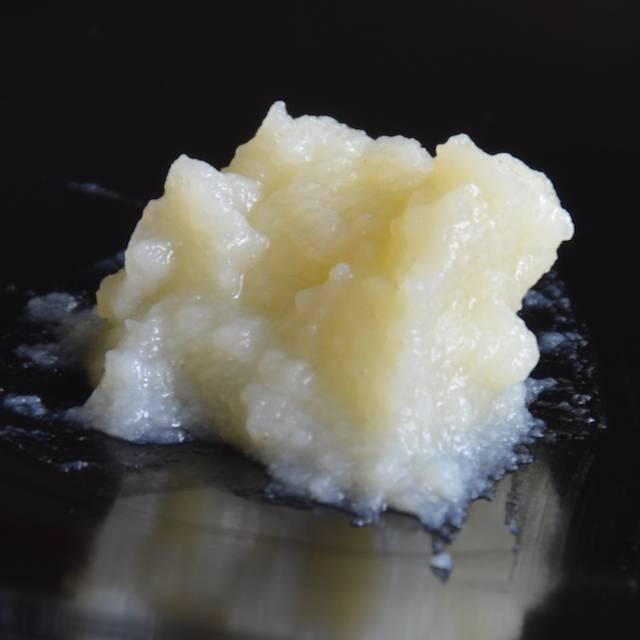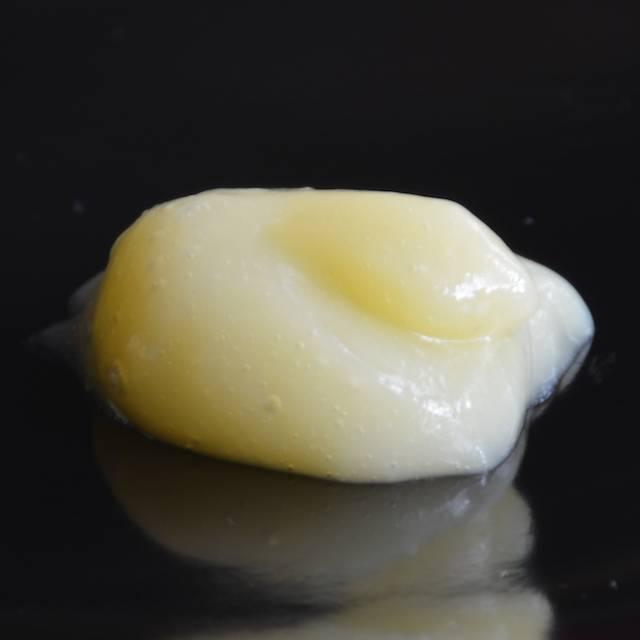-
Posts
10,190 -
Joined
-
Last visited
Content Type
Profiles
Forums
Store
Help Articles
Everything posted by Chris Hennes
-

Uses for Cuban Oregano/Mexican Mint (Plectranthus amboinicus)
Chris Hennes replied to a topic in Cooking
I went ahead and potted it, so I guess we'll see. I'd still love to hear some recipes that use it. -

Uses for Cuban Oregano/Mexican Mint (Plectranthus amboinicus)
Chris Hennes replied to a topic in Cooking
It's a cutting, but it's only got two little leaves, so I am not going to taste it just yet -
Have you tried the hamburger bun recipe in Modernist Cuisine? It makes a basic white bun with a very nice texture for burgers, and the techniques used to achieve it give you a range of textural options.
-
Have you looked at the various options at Specialty Bottle? They have slim aluminum bottles that might work for spices, or some opaque plastic options. They also have lots of colored glass options, some of which might work depending on the aesthetic you are going for.
-

Uses for Cuban Oregano/Mexican Mint (Plectranthus amboinicus)
Chris Hennes posted a topic in Cooking
I got a free sample of this plant in with another plant order, and I thought before I bothered taking up space in the garden with it I'd see if there are any recipes worth using it in. Does anyone else use/grow this stuff? -
I think your plan would work. It won't be quite the same thing, but you'll get the saffron flavor. An alternative if you are planning on combining the sauce and pasta before the pasta has finished cooking and finishing them together would be to add the saffron at that point.
-

Food safe paint/coating for sous vide cooking container.
Chris Hennes replied to a topic in Kitchen Consumer
I was under the impression that all modern paint was effectively food safe once cured: wasn't one of the big concerns about lead in paint because babies were ingesting the flakes? -
Short ribs have a lot of bone to them, so I'd probably estimate something like 50% extra to be on the safe side. So go with 4 to 4.5 lbs of bone-in. It's overkill, but there are worse things to have extra of!
- 1 reply
-
- 3
-

-
The eGullet Society for Culinary Arts & Letters is an all-volunteer 501c3 not-for-profit whose survival depends completely on our corps of volunteers to keep things running smoothly. Over the past year there have been a number of staff changes around the forums. First, we’d like to thank Erin Garnhum, Heidi Husnak, Jeff Meeker, and Mitch Weinstein for their many years of service to the Society, and to wish them well in their future endeavors. Next, you may have noticed some new faces in the hosting corps: it’s my pleasure to welcome Nancy Smith (a.k.a. Smithy) as our newest host. She’s been a member considerably longer than I have and has already been a great asset to our team. Finally, Michaela Scioscia (a.k.a. Mjx) has been promoted to Senior Host in recognition of her many years of service and invaluable contributions to the Society. Thank you to all of our volunteers, past and present; we couldn’t do it without you!
-
How much power does it really need to supply, anyway? Once the bath is at temp, the heater should never be actually drawing 1000 watts, right?
-
This technique works well for me (in fact, you can tweak the timing so the finish step is even faster than that if you want). If you've got access to Modernist Cuisine they've got a nice overview of the technique.
-
I don't see how that can be right if the skin stays attached: you're sure that it doesn't get removed and then reattached, or cooked separately? What is the source of the recipe?
-
Sounds to me like a lose-lose situation: no matter what you do, someone's going to be angry. This is the classic manager's dilemma: your business is reliant on both your staff and your customers, and while your goal is to try to satisfy them both all the time, of course in the real world that can't be done. I think your gut is right in that the "right" answer here is for your staff to suck it up, so the trick is to come up with some way of handling your staff so that their service to this guy doesn't slide and you wind up with both pissed off staff and a pissed off customer.
-
Too bad I didn't see this earlier, I'm sitting a hundred feet from Elways right now, but don't have time to top in and eat!
-
The KR doesn't begin venting until a bit over fifteen psi, actually (I can't recall the actual number: 18, maybe?). So in practice what happens is that once you get close to fifteen you drop the heat way down, and the cooker reaches the equilibrium you mention at some pressure near fifteen psi. As you say, the trick is to keep tweaking the burner level until you hit that sweet spot where the equilibrium is reached at as close to fifteen psi as possible, making sure to never get it so hot that it begins to vent. With some practice you can get pretty good at it.
-
The whole point of a 'non-venting' pressure cooker is to prevent that pressure leakage by regulating the heat before it happens, no? Mine is basically completely silent under normal usage, except when I use very high heat and have the trivet in.
-
Are you using the trivet? I find it makes more noise than without.
-

[Modernist Cuisine at Home] Modernist Vichyssoise (p. 162–164)
Chris Hennes replied to a topic in Cooking
Yes, we're in regular contact with the MC team, I'll make sure they see this discussion. Here is the final soup: Overall it was an excellent Vichyssoise (I made the variant with pressure-cooked potato skin stock replacing half the cream). My only objection was the leeks in the garnish, whose texture I didn't care for. Next time I'll just use the potatoes and chives. I was afraid the soup was going to end up too sweet due to the sweetness of the potato puree, but after all the other ingredients were added the flavor balance was perfect. It also seemed like an outrageous amount of salt to add to a soup, but actually was fine since the soup is served cold (if you were serving it hot I think you'd want considerably less, however). -

[Modernist Cuisine at Home] Modernist Vichyssoise (p. 162–164)
Chris Hennes replied to a topic in Cooking
I thought going into the experiment that maybe the difference between the two potato purees would be subtle: no. Not so much. Here is yesterday's original puree, where the malt powder was added at a very high temp: And here is today's puree, where I cooled the potatoes to below the bath temp before adding the malt powder: There is no doubt that the temperature I added the diastatic malt powder at yesterday was too high, and destroyed the enzyme before it had a chance to act. That puree is distinctly gluey (as you'd expect from a potato puree made in the blender), and far less sweet than the one today, which had none of the gluiness. Today's mouthfeel was very smooth, though it may not appear so from the high zoom level of that photo. Each photo is of about a half teaspoon of puree. Moral of the story: you need to let your potatoes cool a bit before adding the malt powder. -
But from the article you link: Cooking the burger sous vide first would eliminate the difficulty mentioned here and allow the burger to be cooked on high heat.
-

[Modernist Cuisine at Home] Modernist Vichyssoise (p. 162–164)
Chris Hennes replied to a topic in Cooking
This is in process: I have enough potatoes to make a second batch, so they are simmering now. Of course, to be properly scientific about it I should do a control as well (with no malt powder) but I'm not feeling that ambitious. -
I never did get the chance to tell Fat Guy that he was right (on this one thing!). I'd never had the Newman O's until he suggested it, but they are really good.
-

[Modernist Cuisine at Home] Modernist Vichyssoise (p. 162–164)
Chris Hennes replied to a topic in Cooking
I hope that you can, since that's what I did . -
I'm making the Modernist Vichyssoise for dinner tomorrow night and I just started the first part of the recipe: I am confused about the use of the diastatic malt powder, however, so was hoping someone could enlighten me (chemistry was never a strong subject!). The recipe has you simmer the potatoes until fully cooked, then drain them, add diastatic malt powder, and puree in a blender. You then put the puree in a water bath set to 52°C/126°F for 30 minutes, followed by moving them to a saucepan and heating to at least 75°C/167°F. From the book regarding that step: "This halts the enzymatic reatcions." My concern is that at the time I added the malt powder my potatoes were just off the boil, so were very hot. I then pureed in a blender, which certainly didn't cool them down! I checked the temp before putting them in the bath and the puree was at 86°C/187°F. So it would appear that the water bath actually serves to cool the potatoes down to 52°C, and then you reheat them to 75°C. Does this seem plausible? How does the enzyme work that it is stopped on its return to 75°C, but works fine being put in so far above that?
-
Ars Technica has another thought-provoking article today: The psychology of Soylent and the prison of first-world food choices From the article:




